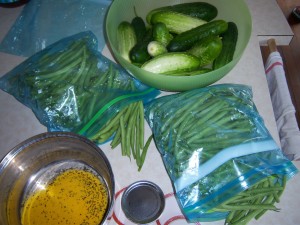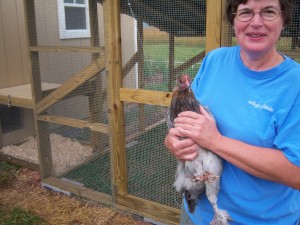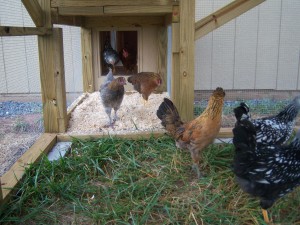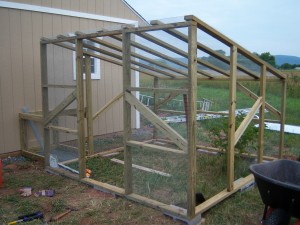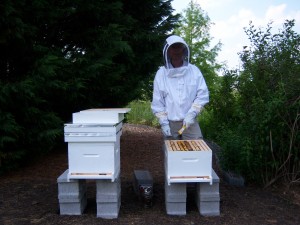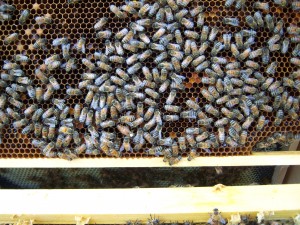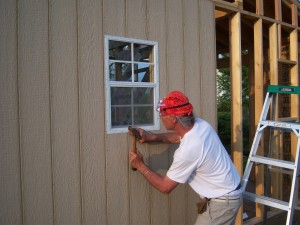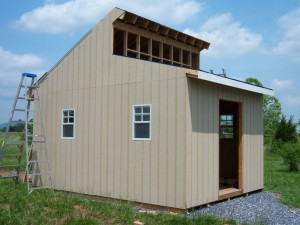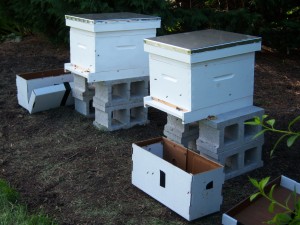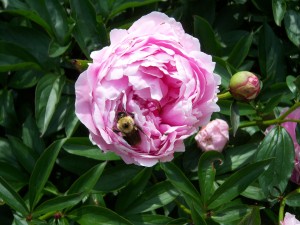todd
Warning: Missing argument 2 for wpdb::prepare(), called in D:\home\littleluceyfarm.com\wwwroot\blog\wp-content\themes\mystique\core\Atom.php on line 2280 and defined in D:\home\littleluceyfarm.com\wwwroot\blog\wp-includes\wp-db.php on line 1210 Warning: Missing argument 2 for wpdb::prepare(), called in D:\home\littleluceyfarm.com\wwwroot\blog\wp-content\themes\mystique\core\Atom.php on line 2280 and defined in D:\home\littleluceyfarm.com\wwwroot\blog\wp-includes\wp-db.php on line 1210 (6 comments, 80 posts)
This user hasn't shared any profile information
Posts by todd

Time to make pickles and dilly beans
0Today is pickle day. Hopefully, there will be more pickling days, but we will have to see how the pickle vines – some might call them cucumbers – do in the next few weeks. Like everything in the garden, there is a long build-up to seeing fruit and then a relatively short harvest. It seems like forever – planting and weeding and watering and watching – and then shortly after you see a few blossoms, the fruit is there. Then shortly after that, it’s gone. Tomatoes and peppers are a bit of an exception. They take longer from blossoms to mature fruit and the season last a good while. But the radishes, spinach, lettuce, peas, beans, and cucumbers explode with fruit and then it’s over.
Now that the cucumbers are here, we will do some canning. The beans are slowing down, but we have saved a few pounds of them to can with the pickles. We will use the same pickling juice for the beans. I love dilly beans. Not sure where or when I had my first ones, but I am looking forward to making these again this year. The Derby bush beans have yielded beautiful long straight beans that will be ideal for putting in jars. And this year’s pickles are clearly better than what we got last year already, so these should be good, too.
Last summer was hot and unusually dry. The lawn lost almost all of its green color and actually died in large patches. We kept the garden barely alive by watering with the soaker hose, but the weather clearly made this a struggle. So far this year has been a little better, but still a bit dry for the past month or so. We planted the squash and cucumbers in between the tomato plants and so far this has working out pretty well although it is a bit tricky finding a place to step.
We planted two varieties of cucumbers: Sassy Hybrid and Miss Pickler “Pioneer”. I’m not sure at this point which is which, but everything we have picked so far looks great.

Chicks move into Gallus Palace
0Fifteen of the new chickens who are about 12 weeks old now moved into the new coop – Gallus Palace – yesterday. It was a s big a day for us as it was for the chickens. It feels like we have been building the Palace since the Eisenhower administration and it was a momentous occasion. We carried the birds over one or two at a time and although we were happy about it the chickens were not so sure. Being creatures of habit, they were initially frozen in their new surroundings. We set up food and water and after a few minutes they started to walk around and explore their new home.
We moved 13 hens and only two of the six roosters. We will be keeping Big Red and Duran for breeding. We left the three Partridge Rock roosters and the Egyptian Fayoumi in the nursery coop where we added the six guineas. This was the driving force as of late behind the effort to finish the Palace. The guineas have been living in the basement in a smallish box about 2 ft by 5 ft. They were clearly outgrowing that space and they were really beginning to stink up the basement. guineas are excellent fliers, unlike chickens, so we wanted them to go inside of the nursery coop with the roosters outside for a few days until they could get better acquainted. Last night after dark, we put the roosters into the nursery coop and come morning they all seemed to be resigned to these living quarters. We will keep the guineas inside the coop for another day or two so they get used to roosting in the coop. The main coop and nursery coop are both covered, so the guineas can’t fly away, but they will be virtually impossible to catch and we are hoping that they will learn to go into the coop at night.
Eventually, we will move the guineas into the Palace and the soon to be fenced chicken yard will not be covered and the guineas will be free to roam the countryside. It is our hope that they will hang around for the free food and lodging, but there is no guarantee. We have read stories of whole flocks of Guineas just wandering or flying off and never returning 
You can review the entire project through the Picasa photo gallery (139 pictures).
Bee patient
0The honeybees seem healthy, but whatever it is that they are suppose to be doing, they are doing it slowly. I keep waiting for my blank frames to fill up with brood and honey, but it is just not happening. Hive A (I think I will call it Anaheim) has always been a lot less active than hive B (let’s call it Boston). They both came as nucleus hives (nucs) from the same beekeeper, so I don’t know why one would be so different from the other. I have read that others have observed the same thing. Nobody seems to know why. After two or three weeks I began to notice that Anaheim had its moments. Around midday or early afternoon on some days, Anaheim seemed a little busier than Boston.
Last weekend when I looked into the hive for only the second time, I found that Boston had filled about one and a half sides of a new frame, but there was very little development anywhere else. Anaheim has only a little comb starting on one new frame.
My nucs came as five frames: one full frame of honey, two frames of mostly empty comb and two frames of brood and bees. I don’t know how many bees I got, but my guess is about a pound or even less which might be about 3,000 bees. Of course, there is also brood in many stages which means that new bees are in the pipeline. The other main option for starting a hive is to get a package of adult bees usually either three or four pounds which means in the 10,000 to 15,000 bee range. But these installations have no brood and the queen has to acclimate herself to her new home and start laying eggs which take around three weeks to hatch.
I assumed that my small village of two or three thousand bees would soon be 10,000 and the queen would quickly fill up the drawn comb with more brood and start drawing comb on my five brand new frames that fill out the 10-frame hive box.
I’m sure I was being a bit impatient, but now after a month, I feel like I might have doubled the population in each hive, but still not made much progress toward filling up the hive boxes.
I hadn’t thought too much about the timing, but apparently the biggest growth spurt of the year comes in the early spring, perhaps mid March through mid May here in Maryland. That is when there is lots of flowering going on and most of the bee populations grow to swarming proportions. I got my bees right after that population explosion (which makes sense if you are selling nucs) and now hive development is much slower.
There is still lots of stuff I still don’t understand. Like if the nectar flow has slowed way down in June and July, why is it that the honey harvest is in July or August? I won’t get any honey this year. I knew that from the outset, but I am already worried that my hives won’t have enough bees or honey to make it through the winter. Patience. The bees are smarter than I am at this and they probably have it all under control.
I continue to feed them. They have never stopped taking my sugar water, so I will continue to make it for them. I am currently using a concentration of about 1 cup of sugar to 1.5 cups of water. Hopefully there is a little burst of nectar and pollen in late August and September and this may be when they are starting to store up honey for the winter.
The Garden Grows
0The garden is growing nicely. We got a late start with the tomatoes and peppers, but it feels like we are on the early side with the corn and onions. There are a couple of rows of string beans which we began harvesting a couple of days ago. We plan to process and freeze a lot of veggies this year. The two rows of limas are slowly coming along. I’m not sure what the problem is with the peppers, but they are growing very slowly. I don’t think the soil is as good at that end of the garden. I’ll have to do a better job of mixing the soil when I till this fall.

Chicken Run
0Although the chickens will soon have a nice new home, indoors is not their preferred habitat. They need a place to be outside yet remain safe from predators. This is the function of the ‘chicken run’.
It seemed like it wouldn’t take too long to build, but of course it is taking longer than expected. The ground here is sooooo hard that digging is a real pain. We went with corregated steel roofing, but I’ll have to climb onto the roof to install it which might be a bit tricky. There is a little ‘tunnel’ between the coop and the run. We didn’t want to screw the whole thing into the side of the brand new coop, so now it attaches by way of the tunnel. The final piece to the run will be a little access door to the yard which will only take a half hour to build – unless it actually takes an hour or three or four!

Honeybees after their first week
0The Honeybees had a pretty ideal first week. The weather was pretty warm and we had lots of sun. This is when the bees are the busiest and happiest. One thing I learned in my classes was not to bother the bees and a cold or rainy day. The bees are bored and they are just look for trouble.
One hive, right from the first day, has been more active than the other. I can typically count 10 bees coming and going for every one at the other hive. This can’t be good. I could see bees landing at the entrance of hive 2 loaded with pollen (stuck all over their back legs), some bright yellow, some darker orange. The new bee larvae needs to be fed pollen or stuff made with pollen, so seeing all this pollen moving into the hive is a good thing. The nucleus colony I started with has frames of brood (developing babies), honey, some pollen, and some uncommitted comb that can be used for brood, pollen or honey. I can only hope that hive 1 has enough pollen and the bees are busier on the inside of the hive attending to the ‘nursery’. Maybe hive 1 has more young bees that work inside the hive and hive 2 has more foragers who go out to collect food.
The bees will work it out. As long as the weather is hot and sunny, there should be food available and every three weeks or so, a whole new generation of bees is born and begin their life cycles.
I don’t expect to harvest any honey this year. I just want to make sure there is enough honey to get the bees through the winter. Occassionally it is necessary to combine two weak hives into one hive to survive the winter. It is better to start spring with one healthy hive than two dead ones. But combining means that I will need to get another queen and do a ‘split’ in the mid spring to get back to two hives.
Ethel is sick
3We don’t know what happened, but Sunday night when we went to lock up the chickens, Ethel was laying by the door. She was concious, but not able to stand and her neck was twisted around in a very awkward looking way. We thought she might have had a broken neck. It has been so hot lately, we also thought she might have had heat stroke. We tried to get her cooled off and tried to get her to drink some water. She spent the night in a box in the basement and weren’t sure she would make it through the night. She did and has very slowly improved. We had to give her water several times a day, but she had no interest in food for the first 36 hours.
Finally, today she was drinking with little help and pecked at some melon and ate some meal worms. The prognosis is good at this point, but we still really don’t know what happened. She isn’t walking and only this evening did she even stand up on her own.

Chicken coop making progress
0When we decided that we wanted more chickens, we knew that we would also eventually need more living space for them. There are really three different types of space involved: interior space that is safe and weather protected, a ‘run’ that is safe from predators but is outside, and field space where they can wander around in the grass and scratch for treats like clover, bugs and worms.
First we thought we could build something like we built before only bigger. A couple of years ago we built two custom coops that can comfortably hold ten and five, respectively. With 16 chickens we were pretty much at capacity. A year ago we only had 12, but wanted to allow one of the hens, Tilda, to raise her own chicks. This worked out beautifully, but required the small coop as a nursery, leaving the remained 11 in the larger coop. This spring we got 20 more chickens, so we know we needed a lot more space.
So building a larger coop was our first option, but later we thought we might not have the time or initiative to design/build something ourselves. We researched pre-built coops only to find that they were rather expensive – even kits. We looked at generic pre-built sheds and realized that they were not quite what we wanted and still a bit expensive. We would have to modify a shed with better ventilation, more light, better access. an internal wall for storage, etc.
So back to the design/build option. We looked at lots of designs on the Internet and started to formulate our ideas. We really liked some designs with a clerestory wall with windows for light. That wall on the inside created the separation for a storage area. I bought a simple drafting/drawing program called Home Plan Pro and started to design the coop.
The design started with a 8′ by 12′ footprint, but quickly changed to 8′ by 14′, followed by 10′ by 16′, and finally 12′ by 16′. I liked the multiples of 4′. I was thinking in terms of sheets of plywood. It was a bit annoying each time I had to lengthen or widen the design, but we figured if we were going to all this trouble, we might as well make it big enough to provide room for all of our chickens as well as storage for their ‘stuff’. On paper it looked nice, but I didn’t fully appreciate its size until I put up the first walls. It was a lot taller than I imagined. I was using 8-ft studs for the walls, but lowered the design to 7′ 6″ so the siding would attach to something on the top and bottom.
The whole build process is on my Chicken Coop Picasa album. This includes everything from site prep to the shingles I put on yesterday.
Meanwhile, the original chickens and Tilda’s babies are all living in the original coop, the new babies (who are now about 7-weeks old) have moved outside to the nursery coop. We need the new chicken palace to be ready for action very soon. I haven’t even started to think about the run or the yard. The run will take some time as it needs framing and lots of hardware cloth. The yard will be perhaps 15,000 sq. ft. so will need quite a lot of perimeter wire fence. It will be a good day when this job is finished, the chickens are installed, and I am sitting in the yard with an ice tea enjoying the scene.

The Honeybees have arrived!
0I have always been curious about honeybees, and now that I have some space, I thought it might be a good time to try beekeeping. Last fall, I read somewhere that there was going to be a three Saturday class on beekeeping given by the Frederick County Beekeeping Association (FCBA). A friend and I decided to take the course which was held in January. It was great fun.
There is so much to learn about keeping bees. I remember thinking after the first class that I felt confident and was ready to get some bees and get started. After the second class, I came home feeling a bit overwhelmed and wondering if I was getting in over my head. By the third and final class, I once again felt more informed and encouraged and excited.
I ordered my bees from a local beekeeper, but knew that they weren’t going to be ready until the middle of May. It was a long time to wait, but they finally were ready for pick up. I drove to Bill’s house and loaded the two ‘nucleus hives’ (a fully operating, half size hive) into the back of my car. I was really hoping that the boxes were sealed pretty well, because I didn’t want to deal with a car full of angry escapees. We made it back home without incident.
I let the bees be still for a half hour, then ‘installed’ them into my two hives. The hive boxes hold 10 frames and the nucs have only five frames, so it wasn’t too crowded lowering the frames into the hives. I installed the five nuc frames first, then dropped in the five virgin frames.
The frames hold what is called foundation – mine is pure beeswax – which the bees use to build out the comb that they use to both raise their young (brood) as well as store honey. There weren’t as many bees in the nucs as I thought there would be, but new bees will be emerging from the brood on a daily basis and the numbers should climb quickly.
Bees spend the first half of their lives inside the hive, tending to the larva, attending to the queen, building comb, concentrating the nectar into honey, etc. They only leave the hive to forage for nectar and pollen during the second half of their short lives. Bees only live one to two months.
So I am hoping that my hives are busy on the inside, temporarily using up some of the stored honey while creating more comb on the new foundation which gives the queen more places to lay her eggs.
The bees have just been moved out of familiar territory and will need some time to acclimate themselves to their new surroundings, so I need to be patient and not worry. Maybe I should cut down on my visits to ‘check the hives’ from 10 times a day to about once or twice. It’s been a (large) number of years since I have been responsible for a human baby, so I guess I can obcess over my bees just a little.
Meanwhile, my friend got his bees in a different type of package, but almost eight weeks ago, and his bees are doing great. He probably has 40,000 to 50,000 bees in each of his hives. They seem to be thriving. Mine were just installed, but I already am worried that they might not get strong enough to make it through the coming winter. I know it’s too early to be worried but I am anyway.

My Sarah Flowers (Peonies)
2A number of years ago when my first daughter was born, I came home from the hospital for a short break – it was my wife who had the baby – and I noticed that our Peonies had just bloomed. I brought some to the hospital and ever since that day I remember my daughter’s birth when the Peonies emerge. They bloomed today – one day early this year. It must have been the perfect combination of sun and rain, but they burst forth today like they do each year, starting as tight balls of potential , then exploding into gigantic eight-inch diameter pink flowers. Happy Birthday Sweetie.
